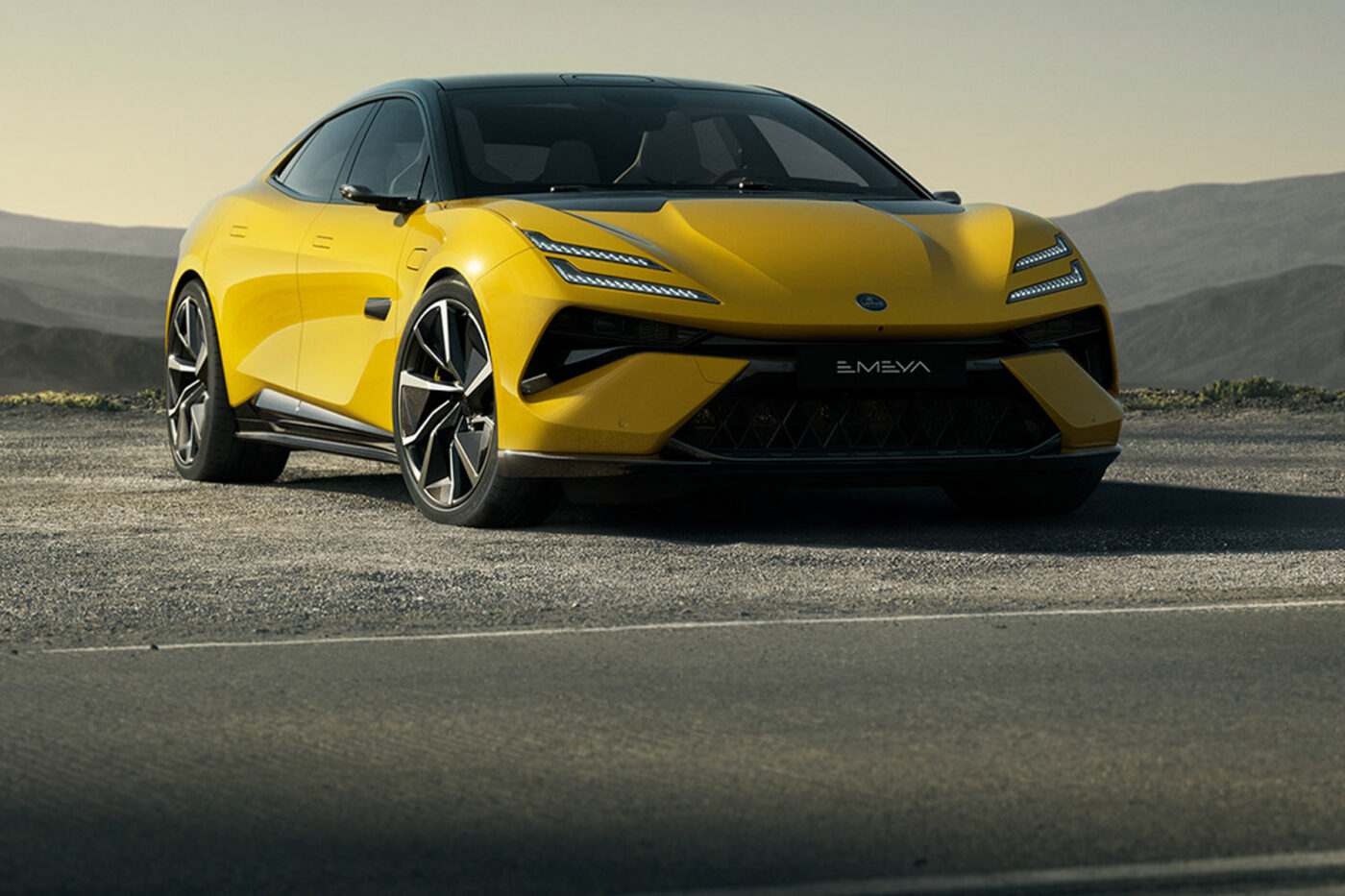
P3 Charging Index Asia: The Lotus Emeya beats them all
The consulting firm has previously published four editions of the P3CI—the first three of which focused on Europe (where the Kia EV6 was the most recent winner) and, last year, for the first time, an edition with models available in North America. The Lucid Air GT won that charging comparison.
The P3CI Asia was created on the occasion of the 37th Electric Vehicle Symposium in South Korea. The methodology is the same as in previous editions. If a car is capable of recharging enough power for 300 kilometres of range in 20 minutes, it results in an index value of 1.0. If the index number exceeds that, the range recharged in 20 minutes is higher. If it is lower, less than 300 kilometres were charged in the same time window. The Asian edition pushed this methodology to its limits for the first time , but more on this later.
P3 tested ten vehicles from various manufacturers sold in significant numbers in Asia or that set new standards in terms of performance. The drive variant with the longest range was used for each model. German models include the Mercedes-Benz EQS 450+ and the BMW i7 eDrive50, both of which have 100 kWh batteries. From South Korea, the Kia EV9 with rear-wheel drive and the Genesis G80 electrified were tested, as well as the Hyundai Ioniq 6 RWD. Chinese brands included the BYD Atto3, the Nio ET5 Touring and the Xpeng G9 with a long-range battery. Two models have a special status: although the Tesla Model Y LR RWD comes from a US manufacturer, it is built in Shanghai and sold in significant numbers in Asia. And although Lotus is a classic British brand, it is owned by the Chinese Geely Group, and the new Emeya with its 102 kWh battery is built in China.
P3 tested all vehicles itself and calculated the charging curves. The tests took place in North America and Europe, and the company used a measuring instrument to monitor the “power line communication” between the vehicle and the charging station. The goal was to ensure that the car was the limiting factor in terms of charging performance and that the charging station did not deliver less power than the vehicle could have processed. That was a particular challenge with the Lotos Emeya. Unlike the European editions of the P3CI, however, the basis for the recharged range is not the ADAC EcoTest, but the WLTP due to international comparability. The current index values are thus not directly comparable with those of previous editions.
Lotus Emeya achieves the highest Charging Index ever recorded
So much for the preamble. Now to the results, where the Lotus Emeya stands out. With a P3 Charging Index of 1.53, the Emeya achieved the best result to date. In 20 minutes, the vehicle recharged sufficient electricity to drive 458 kilometres. That is precisely where the Lotus pushed the limits, as the Charging Index methodology de facto prevented an even better result. The Emeya had already charged from 10 to 80 per cent after just 14 minutes. As the charging capacity decreases progressively at even higher charge levels, the test result also includes six minutes with a relatively low capacity. In the first ten minutes, a peak of 310 WLTP kilometres was recharged with 402 kW and only 148 kilometres in the second ten minutes. From ten to 80 per cent, the average charging power was 331 kW.
That means the Emeya’s average charging performance was even better than the second-best model in terms of peak charging performance. The Xpeng G9 reached a peak of 320 kW but could not maintain this charging power up to 30 per cent charge level – from 35 per cent, the charging curve also fell below that of the Hyundai Ioniq 6. However, an average of 233 kW is a good result. But as the G9’s consumption of 19.4 kWh/100 km is the second highest in the comparison, it is only enough for third place in the P3CI with 1.20 points. In second place is the Mercedes EQS 450+, which charges more slowly but more consistently at peak times with its 400-volt system and is one of the more efficient vehicles with 16.4 kWh/100 km – resulting in a P3CI of 1.24.
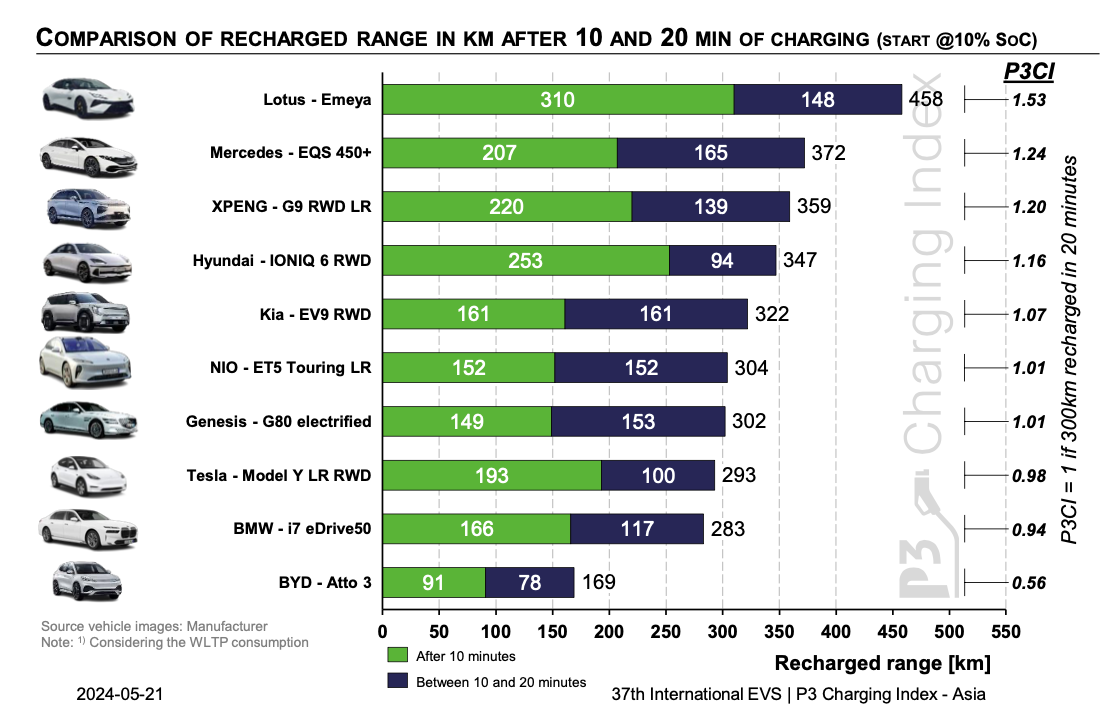
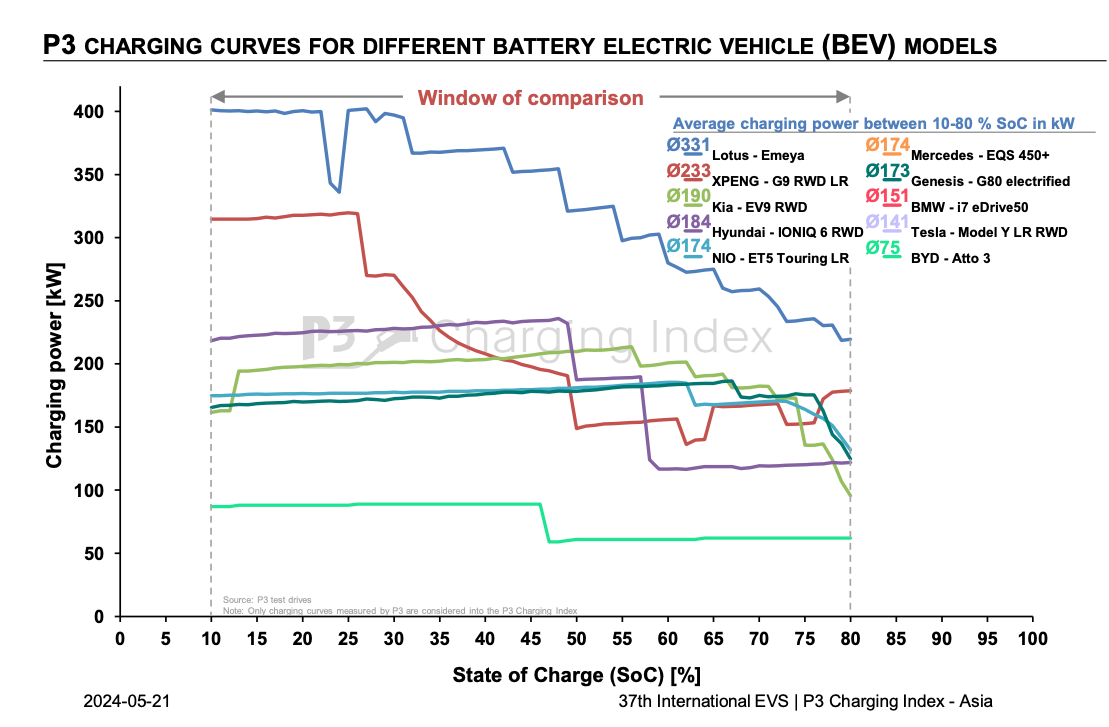
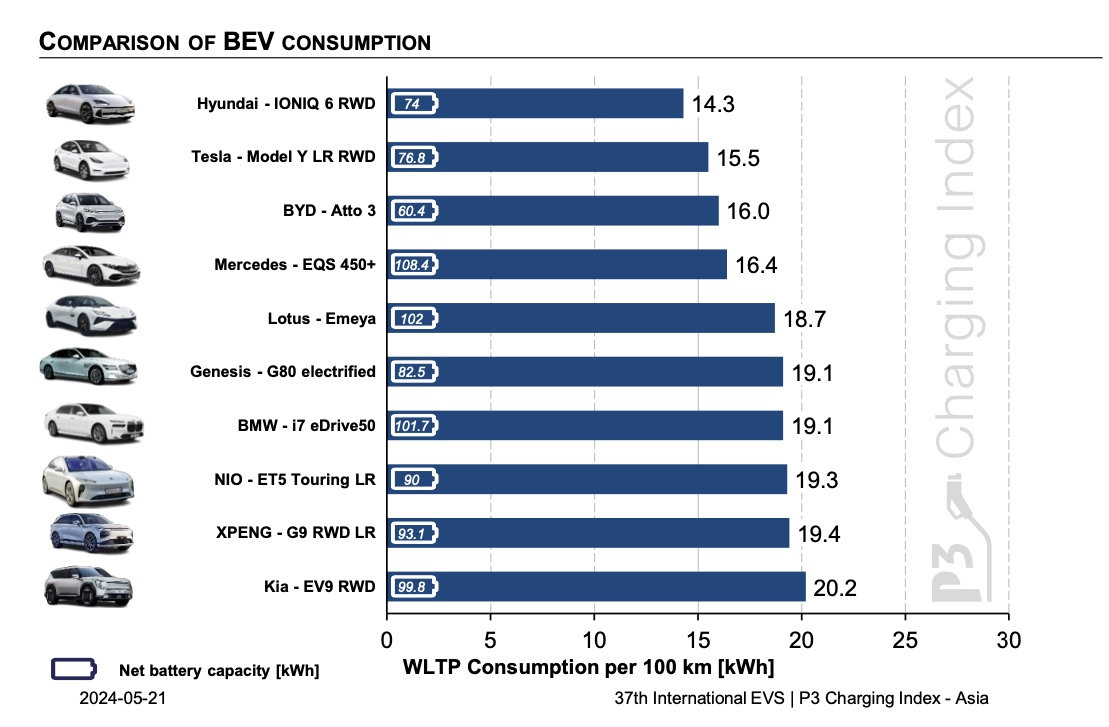
In total, seven of the ten models tested achieved an index value of over 1.0, i.e. recharging more than 300 kilometres in 20 minutes and are therefore considered “suitable for long journeys” in the P3 definition. How the result is achieved varies significantly in some cases. The Hyundai Ioniq 6 achieves a decent average charging capacity of 184 kW and extremely low consumption. The platform brother Kia EV9 with a larger battery charges slightly better at 190 kW (and also highly consistent at around 200 kW), but has the highest consumption in the field – and has to admit defeat to the Ioniq 6 with a total of 1.07 to 1.16.
In the fuel consumption section, it is pretty surprising that the aerodynamically optimised Ioniq 6 is followed by two SUV models, the Model Y and BYD Atto 3, which undercut other saloons such as the EQS, Emeya, G80 electrified and the i7. The other two SUVs in the comparison, the Kia EV9 and Xpeng G9, are at the bottom of the fuel consumption rankings.
Not all of the models tested are currently available in Europe, so the results are not necessarily relevant for end customers. Nevertheless, P3 derives some key findings for electrive that are important for the industry and should also be of interest to consumers in the near future.
- “Charging capacities have now finally broken through the sound barrier of 300kW, which, in addition to the Lotus and Xpeng shown, is underpinned by Porsche. An Alpitronic HYC300, for example, is no longer sufficient to deliver maximum performance,” says P3. For the tests, that meant that P§ had to use Ionity stations with 350 kW per charging point or Alpitronic Hypercharger HYC400 – and with the Lotus, even a special charging station from XCharge in Stuttgart for the full potential. For end customers, the current charging infrastructure could become a bottleneck, at least temporarily; some cars can do more.
- “The maximum CCS charging currents of 500 amps will also be a thing of the past in the medium term. After Tesla has been doing this for years, Lotus is also doing it, while on the charging station side, XCharge is the first hardware manufacturer (not including Tesla) to follow this path,” says P3. One possible consequence: new opportunities could arise for 400-volt platforms if charging with more than 500 amps – and thus more than the obligatory 200 kW – is possible. The keyword is could because current 400-volt manufacturers such as Mercedes and BMW are also attracted to 800 volts. Whether the cheaper models, which remain at 400 volts, will then be designed for currents of over 500 amps is questionable.
- “Due to the high charging power, the 20-minute charging time will soon no longer be state of the art: Lotus can already go from 10 to 80% SoC in less than 15 minutes and then becomes relatively super slow when charging, which then almost becomes a disadvantage over the entire 20 minutes,” explains P3. In other words, there could also be an adapted methodology for the upcoming editions.

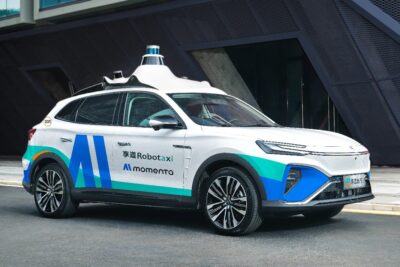
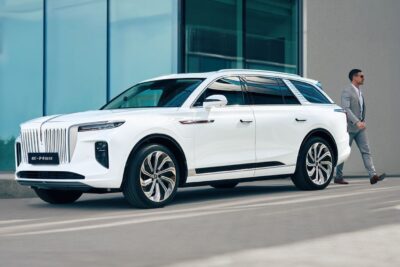
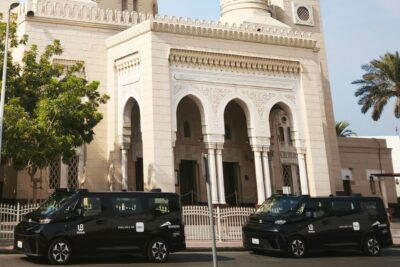
0 Comments